Ultimate Deadlift Shoes Guide: All to Know Before Buying
Author:
Reviewed by:
(21 years of Oly Lifting experience)
Unlock your full potential by engaging with our experts and community! Have questions about your fitness journey or looking for expert advice on weightlifting techniques? Don’t hesitate — leave a comment below and Ihor Shymechko will provide a personalized answer and insights to help you reach your goals.
Torokhtiy is reader-supported. Some links are affiliate links, and we may earn a commission at no extra cost to you. See our disclosure page for details.
If you want to master the deadlift, you need to know that every single little detail counts, and the basis of a great lift often starts with the right pair of shoes. But that doesn’t mean the style – it’s about performance, stability, and safety.
But why are these shoes so important, you may ask? Well, it’s simple – imagine running in high heels or trying to do a deadlift in fluffy, heavily cushioned running shoes and you’ll understand our point.
The shoes you wear will decide what base you’re lifting on, and if you’re wearing the right kind of shoes, you’ll have a stable, flat base that will affect your performance! In a good way, of course.
But let’s get into the specifics; we’ll tell you all about how to find the perfect deadlift shoes
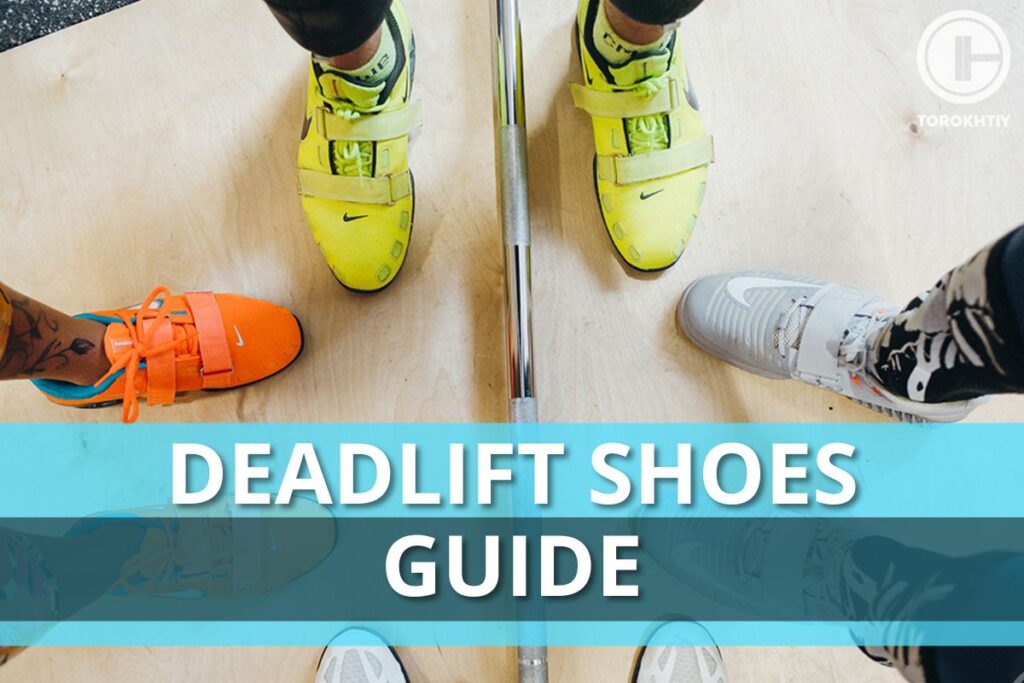
Deadlift Shoes: General Characteristics and Who’ll Benefit From Wearing Them
Do you train regularly by lifting heavy weights? Do you combine lifting training with cardio or functional workouts? If the answer is ‘yes’, then do you have several training shoes for different workouts, or wear the same pair both for strength and high-intensity drills?
Don’t wear the same shoes for various workouts as it won’t help you to progress and won’t improve your results. Improperly chosen training shoes will limit your real capabilities, so you won’t be able to show your best.
If we speak about weight lifting, powerlifting, or any other workout type that deals with working with weights; choosing a good pair of trainers will promote your performance greatly which you’ll be able to notice instantly.
Buying deadlift shoes isn’t easy, it requires an understanding of the essence of deadlift training practice and knowing your own needs to facilitate lifting more.
Let’s speak about the peculiarities of deadlift shoes and the advantages you’ll get by wearing them during weightlifting and powerlifting sessions.
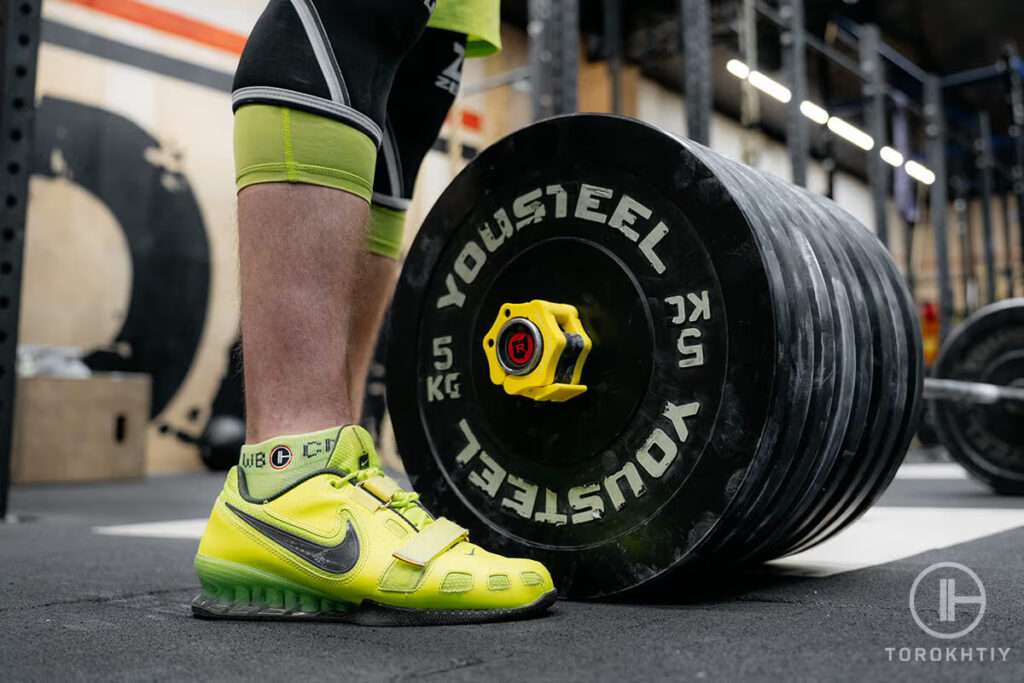
Deadlift shoes aim to improve performance output in heavy deadlifts. They have flat outsoles and little stack height compared to running or other training shoes. Due to such a design, lifters have better contact with the floor to improve their balance while pulling weights and have better power production.
A low stack height decreases the entire range of motion, so you won’t push your knees forward when working out with heavy weights.
Speaking about the cons of these training shoes, there are several points that can confuse novices and amateurs in lifting:
1. Limited scope of use
Deadlift shoes can be used just for weight lifting workouts, namely for deadlifts. If you’re a recreational athlete looking for universal cross-training footwear, then deadlift shoes won’t fit your needs perfectly.
If you are also practicing HIIT or functional training, you need to find shoes with a higher stack and bigger heel-to-toe drop. Deadlift shoes can be utilized just for deadlifts.
2. Price rate
As usual, deadlift shoes are pricier than conventional training sneakers and deadlift slippers. If you compete in power- or weightlifting competitions, or need these training boots for defined purposes, it means you can afford such pricey deadlift shoes.
However, if you’re searching for standard cross-training footwear to lift weights, it doesn’t make sense to overpay for deadlift boots.
Who Will Benefit From Wearing Deadlift Shoes?
Generally, there’s a narrow scope of those who really need a pair of deadlift boots. These shoes matter to those athletes who strive to improve their lifting technique and performance, and who’re really serious about lifting weights.
There are two groups of sportsmen who will definitely benefit from wearing deadlift shoes for their drills:
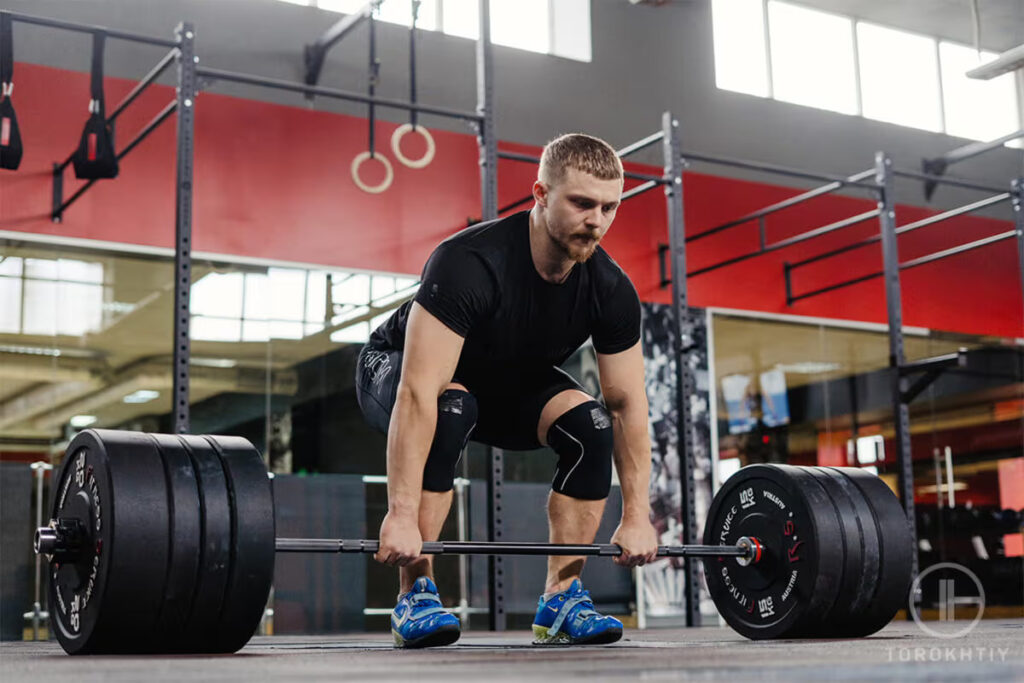
1. Powerlifters
Powerlifters who want to find a pair of supportive strength footwear to advance in lifting and scale up their biomechanics. Such athletes are obsessed with their body form and try to buy equipment of high quality.
The majority of them use deadlift shoes for competitions. It’s a well-known fact in the lifting community that powerlifting federations have strict requirements for what apparel, shoes, and gear to use in the powerlifting contests.
So, it’s highly important to check the federation specifications in advance when you decide to buy deadlift shoes. Although the key point is that they must have a closed toe (by the way, it’s a default feature, all deadlift boots have it), with a flat underside that isn’t higher than 5 cm.
2. Serious lifters
Serious lifters who take their gym and contest performance very seriously. They should find deadlift shoes they feel comfortable in both during the training session and official lifting competitions.
4 Types of Deadlift Shoes Available on the Market
Besides the conventional deadlift boots, some lifters prefer wearing deadlift slippers or even training barefoot.
Others don’t take it too seriously and wear ‘barefoot-like’ Converse or Vans as they’re budget-friendly and they can wear them for tough lifting drills without the fear of ripping them. Let’s outline shortly what pros you’ll get while training shoed and barefoot.
1. Privileges of Deadlift Slippers
These shoes have minimalist stack height, meaning they come with a very thin sole that separates the foot from the ground. So, a lifter gets a more natural feel by close contact with the floor, and they can benefit from a limited range of motion while deadlifting.
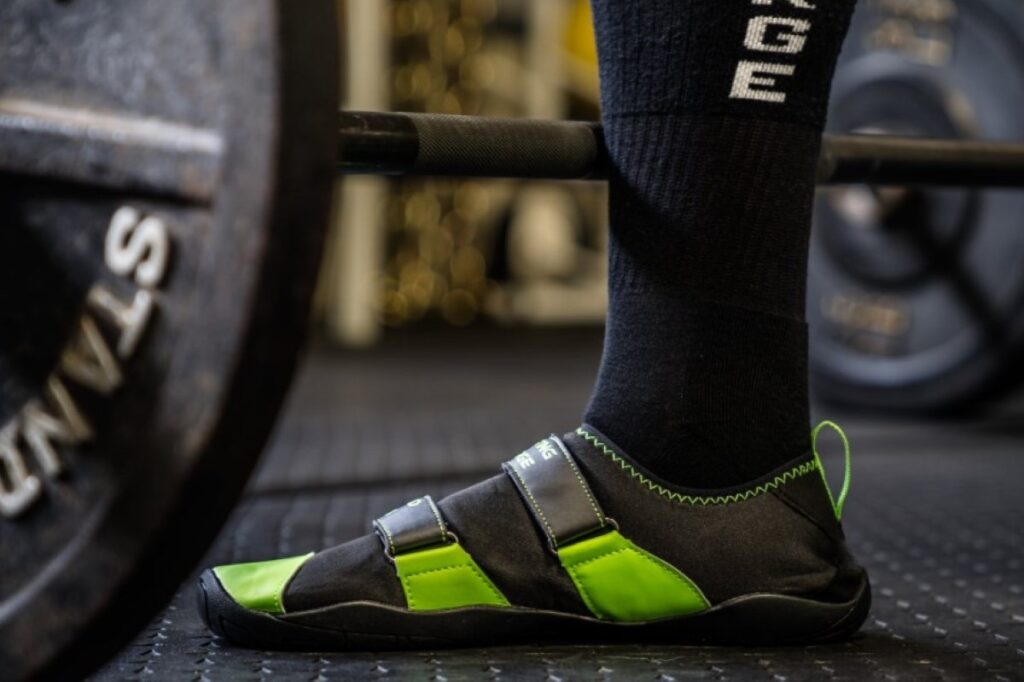
2. Low-Top vs. High-Top Deadlift Shoes
It’s pretty clear that low-tops don’t cover your ankle and come with more minimalistic design. But still they offer enough support. We’ve observed such models in our review above, so the key peculiarities of low-top deadlift shoes depend on the brand and the shoe model itself.
Meanwhile, high-top trainers offer excellent ankle support and stability. Like low-tops, they come with minimal heel-to-toe drop and can be applied for other lifts. Such shoes can have lateral and medial guards by keeping the ankle stable in a fixed position during heavy lifts.
High-tops are best for those who need ankle support and those who perform sumo deadlifts. When performing sumo lifts, there’s a greater stress on the ankles due to a wider position. Training shoes with high collars keep your feet from accidentally moving under heavy weights, which can result in injuries and sprains.
There are controversies about what type of deadlift shoes is better. Generally, it depends on your preferences, lifting goals, and what training you plan to perform.
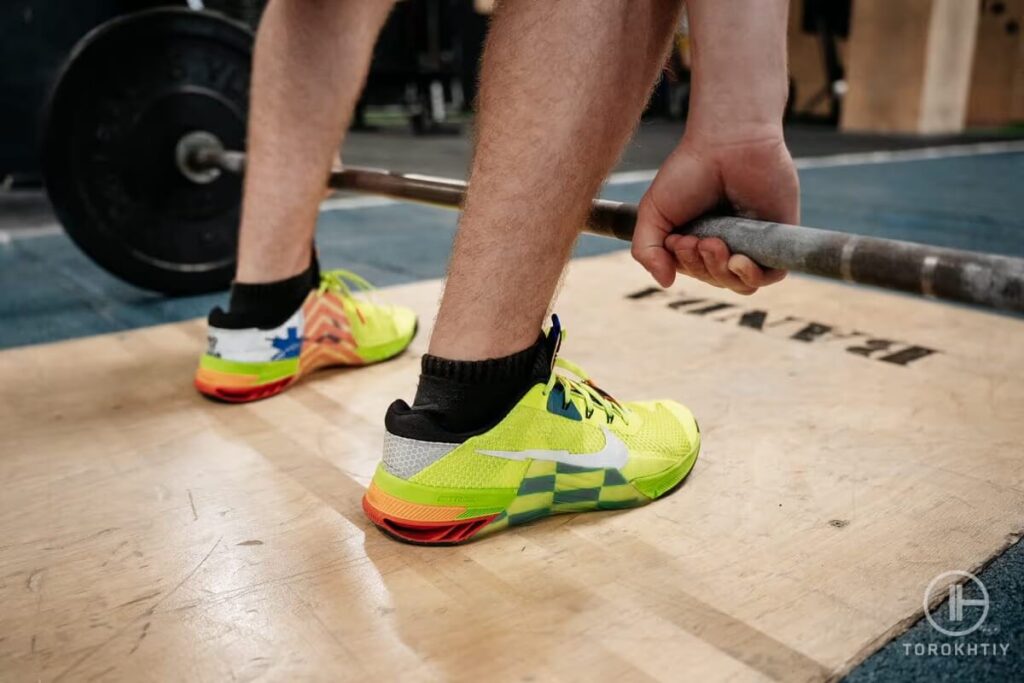
3. Wrestling Shoes
Wrestling shoes are ideal for deadlifts because they have high ankle support, a flat and grippy outsole to minimize the range of motion and prevent slipping. The boots’ design is quite durable, flexible, and breathable enough for performing deadlifts safely, by providing great support for your feet.
Also, besides Martial Arts, wrestling shoes can be worn for the SBD workout. Many lifters like these shoes due to their great ankle support, low heel, and contact with the floor.
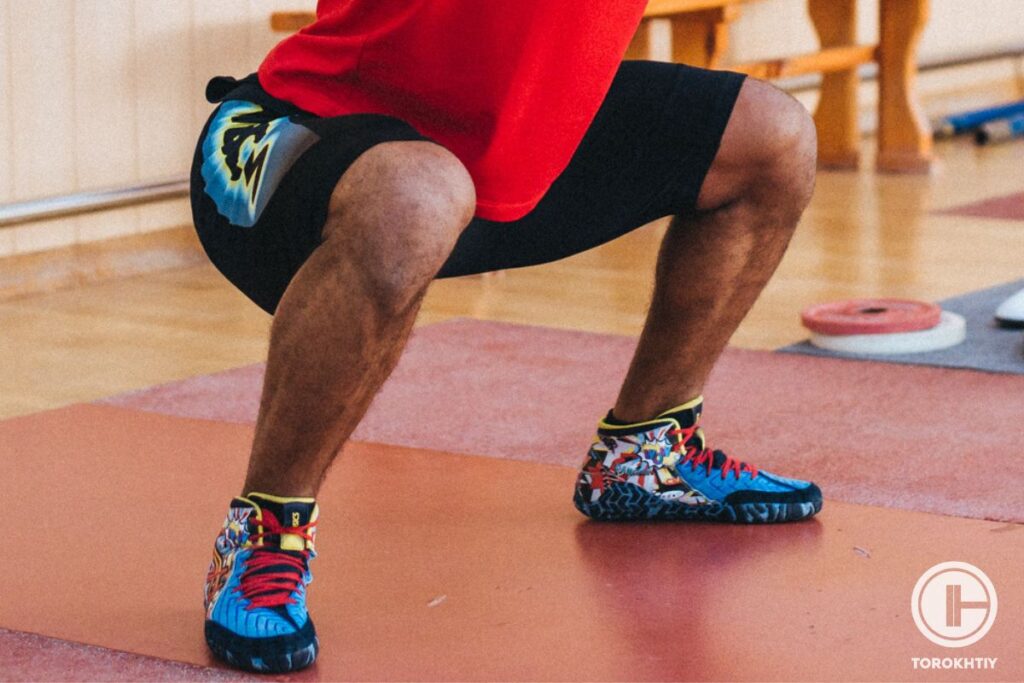
4. Weightlifting Shoes
Unlike deadlift shoes, weightlifting trainers have a raised heel-to-toe drop which enables you to shift the weight forward. So, you’ll be able to squat deeper. However, this feature requires more range of motion when performing a deadlift, requiring more muscle work, and causing an extra space for heavier deadlifts.
Weightlifting boots have more cushion, which makes it possible to wear them for various lifting workouts at the gym.
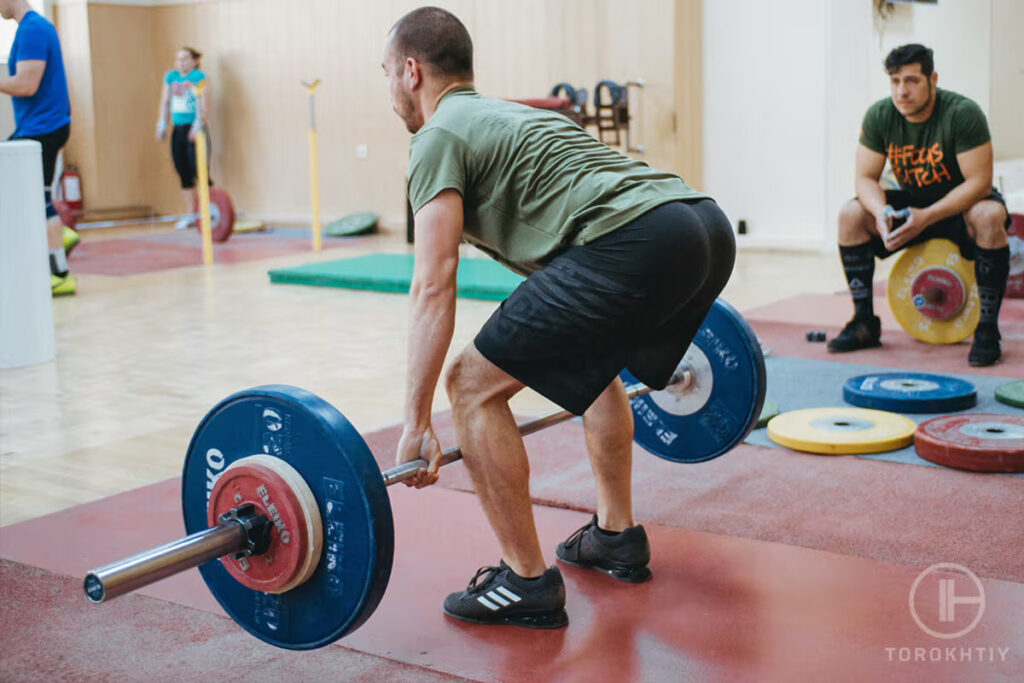
Advantages of the Barefoot Deadlifts
The main reason is that a lifter will be closer to the surface. It decreases the overall range of motion to lift the weight, which inevitably will influence their performance, i.e., lifting near-to-the-maximum weights.
Despite the fact that deadlifting barefoot is against the IPF rules, non-shoed deadlift is popular among pro lifters during training because it conforms well with their body physiology and kinetic patterns.
Lifting barefoot allows a lifter to pull more weight with the same exertion, while mitigating the risk of overextension and injuries.
An athlete gets greater stability and reduced exertion of the stabilizer muscle group by removing the source of instability. This is their footwear which can cause problems because of a narrow sole, elevated heel, or cushioned insole.
Training barefoot provides a more stable base when being fully grounded with heavy loads. This enables them to maintain the correct deadlift form and activate the muscles properly during deadlift training.
4 Reasons Why to Wear Deadlift Shoes
Some athletes choose not to wear specific deadlift shoes, however, there are proven benefits to their use. Although if you want to improve your movement mechanics and power output, then choosing perfect deadlift shoes is a must-have for you.
Various training shoes offer different levels of stability, heel heights, and ankle support and mobility to gain better performance and progress over time.
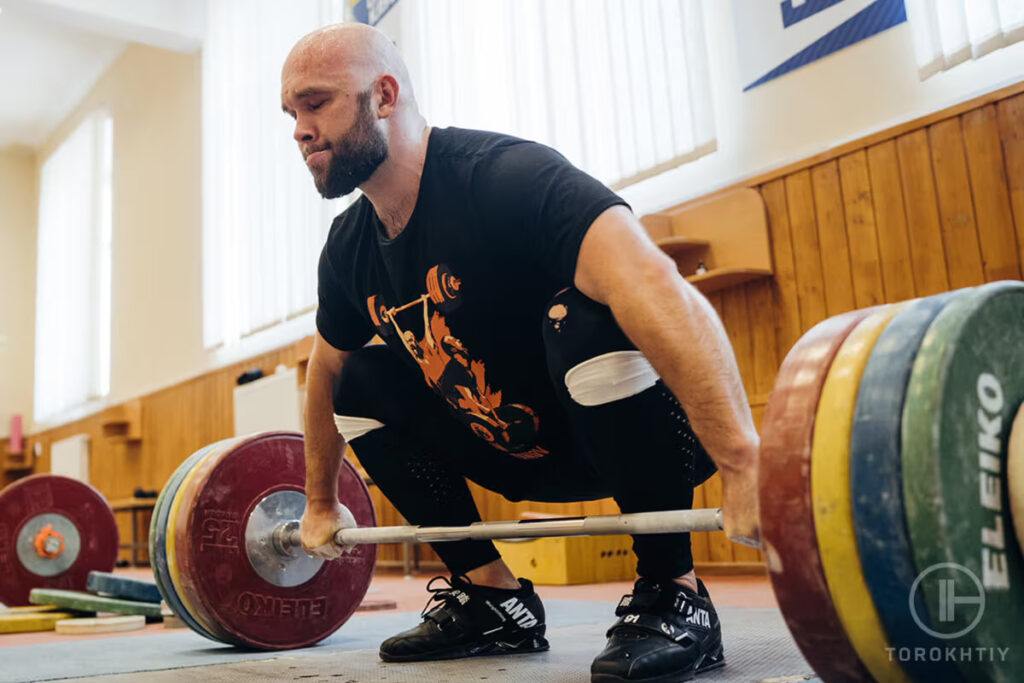
1. Improve Your Deadlift Performance
Deadlift shoes can enhance your body position to do deadlifts correctly. Thanks to the sturdy and firm outsole and minimal stack height, you’ll be able to convert your strength properly to lift heavier weights each time.
You’ll have better balance due to the stable outsole with a full grip surface. Thus, it’ll be easier to keep a tripod position, that is the heel base, big, and pinky toe.
2. Provide a Good Grip on Any Surface
Deadlift shoes provide a pretty good grip on every type of floor thanks to a flat and rubber grip-pattern outsole. As you pull heavy loads, you need shoes with pretty grippy sole to transfer all the power to deadlifting without thinking about your position and good contact with the floor during working out.
3. Provide Ankle Support
Depending on the type of shoes you choose you’ll be able to gain better ankle stability due to the height of the ankle collar in the training shoes. High-top deadlift shoes will be able to prevent the slipping of your feet inside the boots and also limit the range of motion, which can improve your strength output.
4. Are Effective for Powerlifting Competitions
If you’re a professional lifter who takes part in powerlifting competitions regularly, deadlift shoes are a must-have for you. Due to properly selected boots, you’ll succeed in training and perform better as these shoes can assist you to pull heavier weights with better stability and contact with the surface.
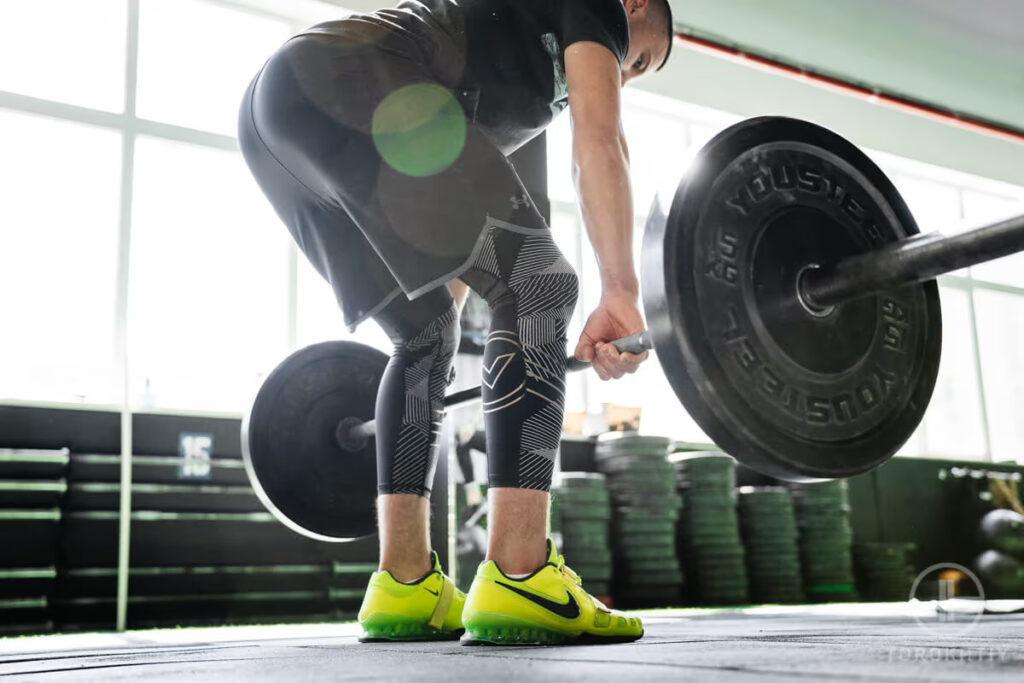
7 Criteria How to Choose the Best Deadlift Shoes
Indeed, buying deadlift shoes can be a real investment for your progress in lifting heavy weights, and this footwear can be quite expensive. That’s why you should think well before buying a high-quality pair which could improve your performance and also prevent injuries.
Consider the following points that really matter when it comes to picking up the best deadlift shoes.
1. Finding the Right Size
To choose the right size of the training shoes, first, you should follow the manufacturer’s size guide. On the other hand, most experienced athletes choose a pair with a snugger fit for maximum performance.
However, it doesn’t mean that your toes will be jammed in the toe box, so they’ll feel numb. Or vice versa, your shoes don’t have to be too wide as it brings more space and you’ll lose your balance while deadlifting.
A snug fit prevents you from sliding inside the shoes, so you’ll get a better connection with the floor. If you have a wide foot, you’d better choose something between 0.2″ – 0.4″ more in length to have a bit more space in the toe box to accommodate the width of your feet.
2. High Level of Stability
You need deadlift shoes that won’t compress your feet or lead you lose the balance for deadlifting. They should have a flat sole and minimal stack height so you are as close as possible to the floor.
3. Sole Pattern
Good deadlift shoes need to have enough traction with different surfaces that also prevent occasional slippage. Rubber shoes are perfect for doing deadlifts.
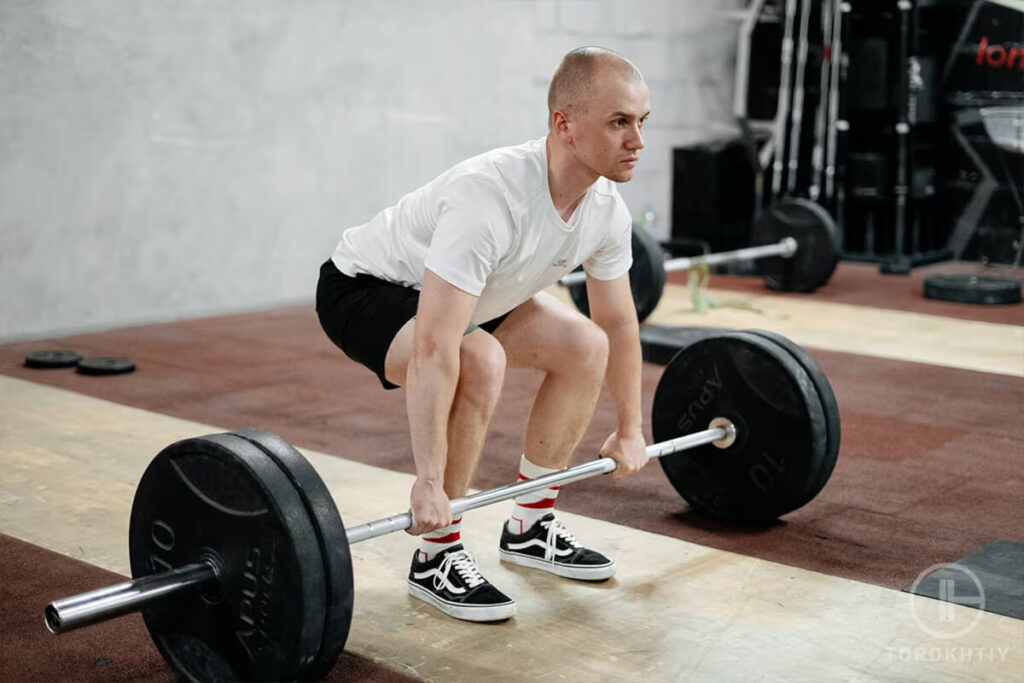
4. Sole Quality
Another vital point concerning the sole features is its flexibility. You should feel the surface well when wearing the deadlift shoes, while providing a stable base for performing deadlifts.
A flat and flexible outsole helps to convert your strength effectively to lifting and keeping balance. Perfect deadlift shoes have to bring you natural movements by preserving proper condition.
5. Stack Height
The best deadlifting shoes are with a minimal stack height that vouches for a strong and correct deadlift technique. The majority of deadlift boots come with a heel height from 0.1″ to 0.6″. Shoes with a lower stack height or even flat shoes vouch for a more natural position of the foot.
6. Material Durability
If you want your deadlift shoes to serve for a longer time, then choose boots made from durable materials such as a mix of textile and leather. Keep in mind that leather footwear can be quite stiff and bring less comfort while lifting weights. You may prefer shoes designed from breathable mesh and leather.
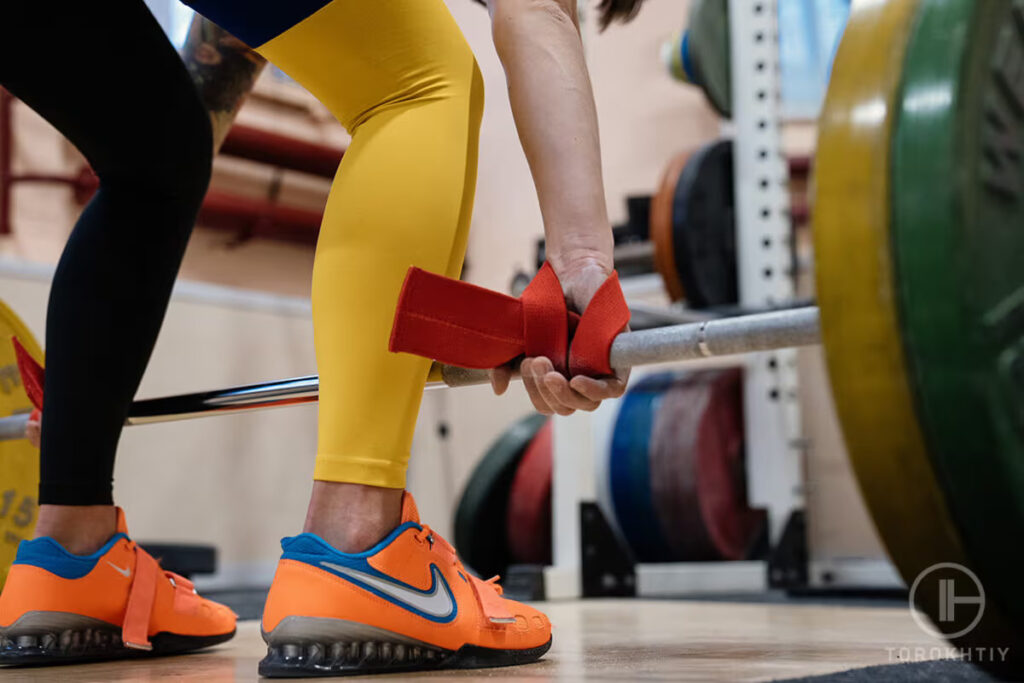
7. Consider Your Lifting Style
Depending on what type of deadlifts you prefer to practice, you need to pick up the shoes of the specific design. For instance, if you do sumo deadlifts, choose boots with wider soles and toe boxes. If you perform conventional deadlifts, then focus on deadlift shoes with narrower soles.
Adidas Powerlift 5 Weightlifting Shoes
Adidas Powerlift 5 Weightlifting Shoes are designed for serious weight- and powerlifters who want to get the maximum out of their workouts, with gradual progress. Due to their design, these weightlifting shoes for deadlift can transfer your power, and it’s possible to wear them for other lifting workouts besides the deadlifts.
Your feet won’t sweat in these shoes as they’re made of flexible canvas with breathable mesh inserts. Meanwhile, the model provides excellent stability thanks to a rubber outsole, a high-density midsole wedge, a reinforced heel, and a strap with a lace lockdown closure.
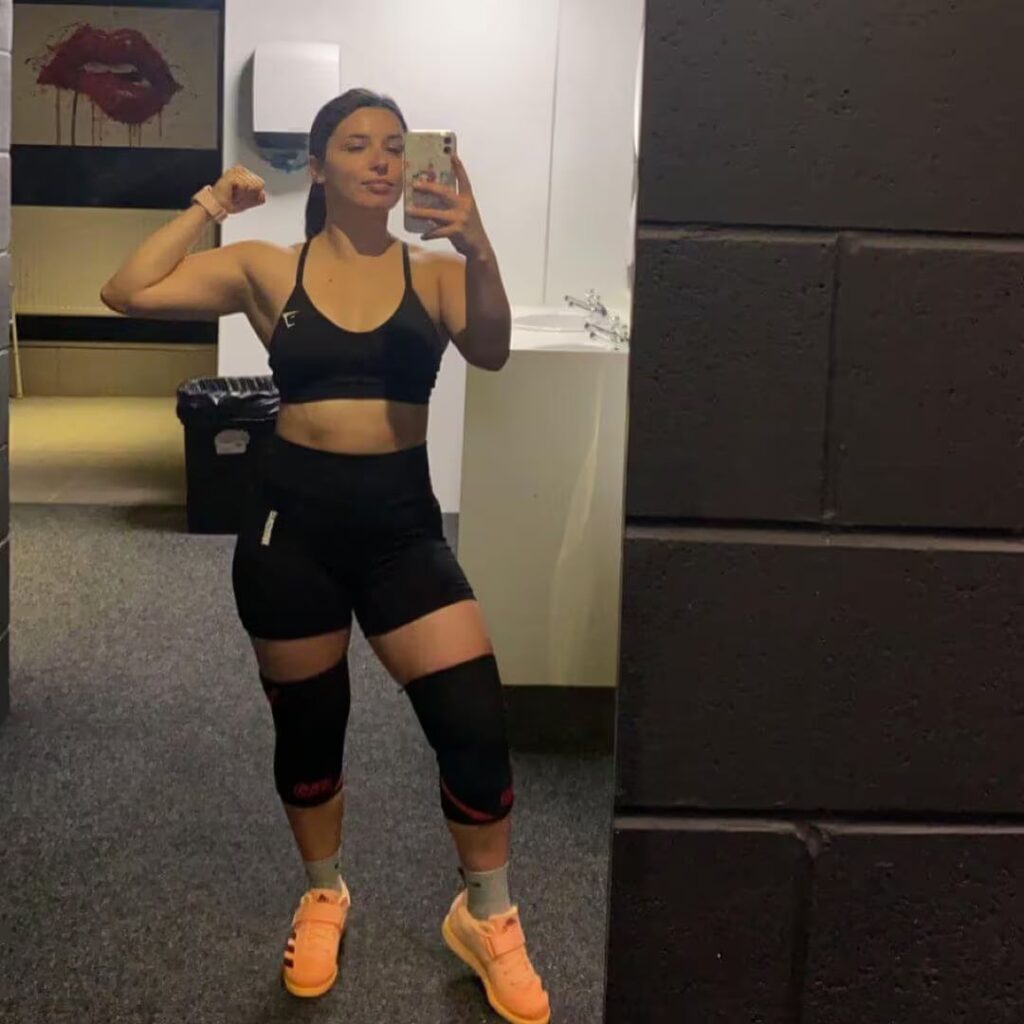
Due to a flexible toe box and open mesh inserts in the heel and midfoot, you’ll benefit from ultimate comfort while wearing them, and get more breathability and flexion. We recommend you pick up shoes one to one-and-a-half sizes above your standard.
Adidas Powerlift 5 shoes are equipped with high-density EVA sole and thick rubber outsole, which altogether make them quite stiff.
The stiffness of the sole and midsole can be handy for squat stability, however, for weightlifting, there’s less maneuverability in the toe box. So, these boots can be also treated as shoes for deadlifts and squats as well.
FAQ
Is It Ok to Deadlift in Sneakers?
It depends on the type of sneakers you wear. If these are more like running or cross-training shoes, then skip using them for deadlifts because they have too much cushioning and high heel-to-toe drop. If you wear Converse-like sneakers, these are suitable for lifting training as they come with flat outsole and ankle support that can promote proper deadlift technique.
Do Deadlift Shoes Make a Difference?
Yes, deadlift shoes help a lifter with their own biomechanics, allowing them to maintain the correct form while deadlifting, i.e., supporting the feet by reducing the range of motion in the ankle area, giving enough stability due to the flat sole, and good grip through the rubber outsole.
Can I Squat in Deadlift Shoes?
You are better to choose squat or cross-training shoes for squat performance. The reason is that deadlift shoes have a flat sole and no ankle support and get the proper squat depth needed for squats to keep the right form. With deadlift or weightlifting shoes, you’re likely to lean backward when trying to squat, or won’t be able to squat to the full depth.
Conclusion
Choosing the right deadlift shoes isn’t just a matter of comfort, it’s about optimizing your performance and keeping yourself safe during lifting. With the right pair, you’ll find that your stability, grip, and lifting technique in general can improve a lot.
Remember to consider the type of shoes that fit your lifting style, and try out a few different pairs because the fit can be all over the place sometimes.
As far as we’re concerned, Adidas Powerlift 5 Weightlifting Shoes have everything you could possibly want in deadlift shoes and we can’t recommend them enough. Their durable, able to improve your deadlift game, and they’re comfortable to wear.
You’ll succeed to nail your technique and be able to lift heavy weights without sacrificing your balance and coordination capabilities. Adidas Powerlift 5 trainers are a worthy pair of training deadlift boots that won’t limit your movements during the toughest drills.
Have questions about what makes deadlift shoes stand out from standard cross-training shoes? Leave a comment below and our weightlifting experts will answer them in the shortest time.
Also read:
- Best Barefoot Shoes for Lifting
- Weightlifting Shoes Guide
- Resistance Bands Guide
- Best Gym Shoes for Men
References:
- Kinematic Changes Using Weightlifting Shoes on Barbell Back Squat // LWW: https://journals.lww.com/nsca-jscr/Fulltext/2012/ 01000/Kinematic_Changes _Using_Weightlifting_ Shoes_on.4.aspx.
- An electromyographic analysis of sumo and conventional style deadlifts // LWW: https://journals.lww.com/acsm-msse/Fulltext/2002/ 04000/An_electromyographi c_analysis_of_sumo_ and.19.aspx.
- The influence of shoe sole’s varying thickness on lower limb muscle activity // Sciencedirect: https://www.sciencedirect.com /science/article/abs /pii/S1268773110001037.
- Footwear Affects Conventional and Sumo Deadlift Performance // NIH: https://www.ncbi.nlm.nih.gov /pmc/articles/PMC7918349/.
- Shod vs. Barefoot Effects on Force and Power Development During a Conventional Deadlift // LWW: https://journals.lww.com/nsca-jscr/Fulltext/2018/06000 /Shod_vs__Barefoot _Effects_on_Force_and _Power.5.aspx.
- The effect of weightlifting shoes on the kinetics and kinematics of the back squat // Researchgate: https://www.researchgate.net /publication/301550201_ The_effect_of_weightlifting _shoes_on_the_kinetics _and_kinematics_of _the_back_squat.
- Photos are made by Torokhtiy Media team, and by Liftinglarge.com.
Why Trust Us?
With over 20 years in Olympic weightlifting, strength training, nutrition coaching, and general fitness our team does its best to provide the audience with ultimate support and meet the needs and requirements of advanced athletes and professional lifters, as well as people who strive to open new opportunities and develop their physical capabilities with us.
By trusting the recommendations of our certified experts in coaching, nutrition, and sports training programming, as well as scientific consultants, and physiotherapists, we provide you with thorough, well-considered, and scientifically proven content. All the information given in the articles concerning workout programming, separate exercises, and athletic performance, in general, is based on verified data.
The product testing process is described in more detail here.
Author: Ihor Shymechko
Pro Olympic Weightlifter, Coach
Best Results: Snatch – 208 kg,
C&J – 240 kg
Ihor has been a professional weightlifter since 1996, boasting over two decades of competition experience. His notable achievements include clinching the European Championship in 2009 and securing a silver medal in the 105kg division at the Senior World Championships in 2011. Ihor represented his country in the 2008, 2012, and 2016 Summer Olympics. After retiring from competitive weightlifting, he transitioned to coaching, leveraging his vast experience to guide athletes who now compete on both national and international stages.
Reviewed by: Oleksiy Torokhtiy
Olympic Weightlifting Champion, PhD in Sport Science
Best Results: Snatch – 200 kg,
C&J – 240 kg
Oleksiy Torokhtiy is a professional athlete boasting 20 years of experience in Olympic weightlifting. With multiple European and World titles under his belt, he has showcased his prowess in two Olympic Games (Beijing 2008 and London 2012). Upon concluding his illustrious career, Oleksiy dedicated himself to coaching. By 2022, he had conducted over 200 weightlifting seminars worldwide. He is the visionary behind an international sportswear and accessories brand known for its motto, “Warm Body Cold Mind.” Additionally, he is an esteemed author and the creator of a series of training programs and eBooks.




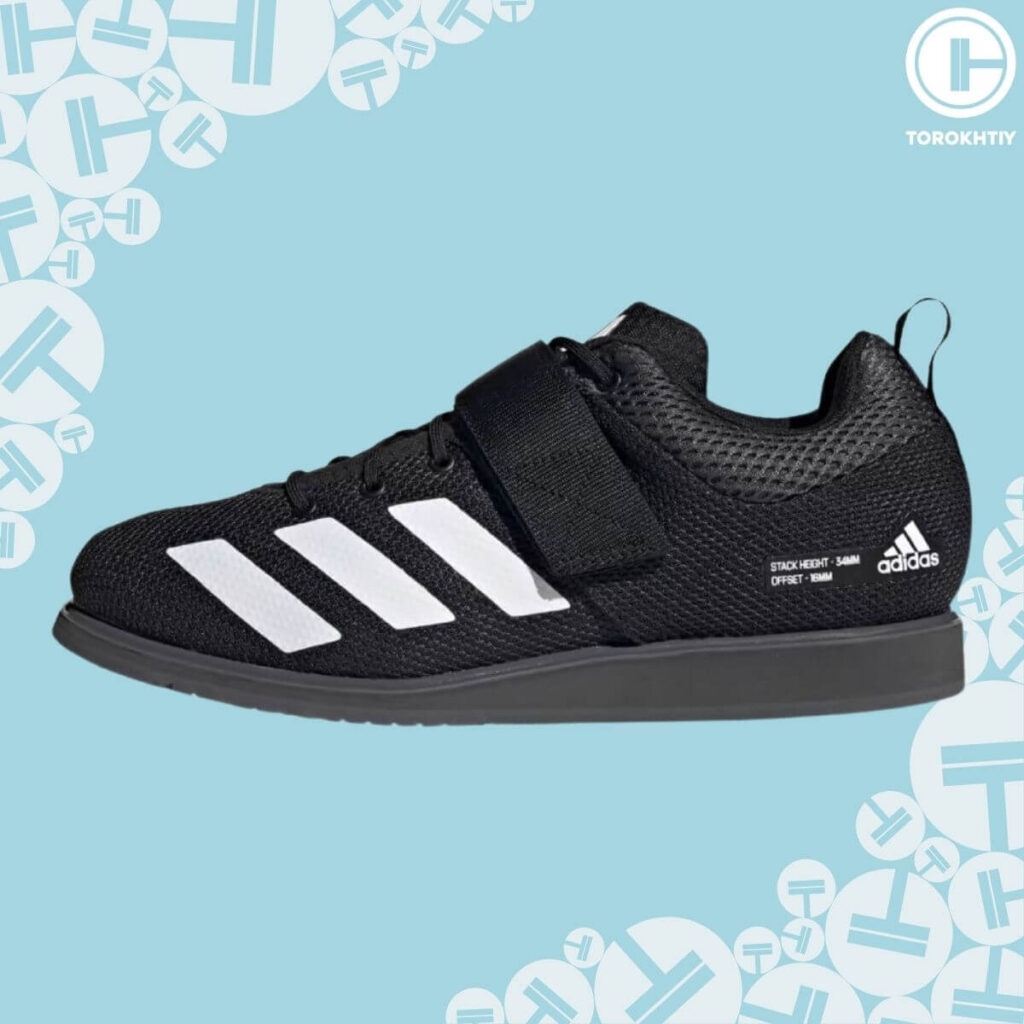
Still have questions after reading our article? Unlock your full potential by engaging with our experts and community! Don’t hesitate — leave a comment below and Ihor Shymechko will provide a personalized answer and insights to help you reach your goals.